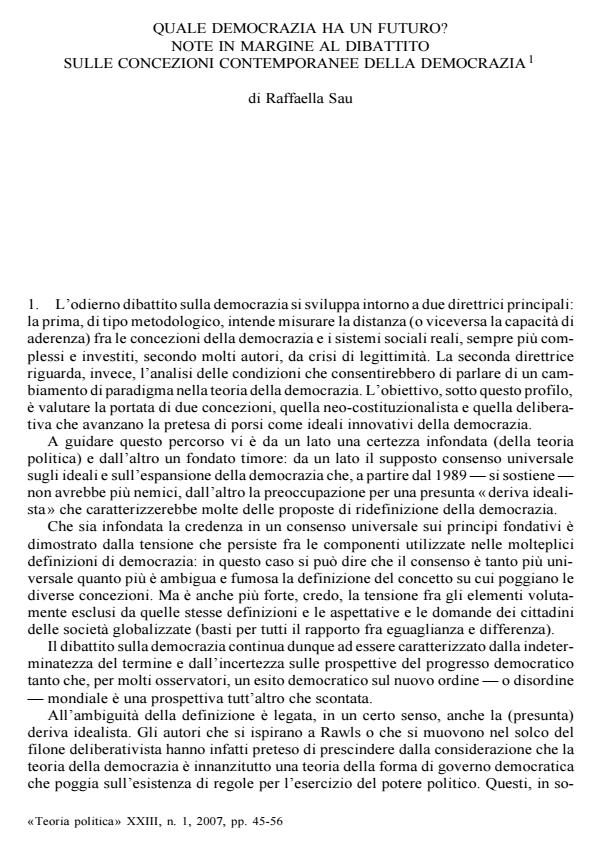Quale democrazia ha un futuro? Note in margine al dibattito sulle concezioni contemporanee della democrazia
Titolo Rivista TEORIA POLITICA
Autori/Curatori Raffaella Sau
Anno di pubblicazione 2007 Fascicolo 2007/1
Lingua Italiano Numero pagine 12 P. 45-56 Dimensione file 37 KB
DOI
Il DOI è il codice a barre della proprietà intellettuale: per saperne di più
clicca qui
Qui sotto puoi vedere in anteprima la prima pagina di questo articolo.
Se questo articolo ti interessa, lo puoi acquistare (e scaricare in formato pdf) seguendo le facili indicazioni per acquistare il download credit. Acquista Download Credits per scaricare questo Articolo in formato PDF

FrancoAngeli è membro della Publishers International Linking Association, Inc (PILA)associazione indipendente e non profit per facilitare (attraverso i servizi tecnologici implementati da CrossRef.org) l’accesso degli studiosi ai contenuti digitali nelle pubblicazioni professionali e scientifiche
Should we talk about a change of paradigm in the theory of democracy? Two conceptions in particular deliberative democracy and neo-constitutional democracy may be considered new models. Deliberative theories enphasize the role of consensual decisions which aim at overcoming majority rule and at revitalizing the principle of popular sovereignty. Neoconstitutionalist theories argue instead that rights are the only remedy against majoritarian power, i.e. against the old fear of the tiranny of the majority. Those who criticize these theories stress their inconsistency with respect to the link they introduce between procedures and fundamental principles. This may well be their failure, but some suggest that it is precisely from this inconsistency that we can draw some ideas about a future strategy: it is in fact starting from a good mix of rules and ideals that a democracy for the future may be built.
Raffaella Sau, Quale democrazia ha un futuro? Note in margine al dibattito sulle concezioni contemporanee della democrazia in "TEORIA POLITICA" 1/2007, pp 45-56, DOI: